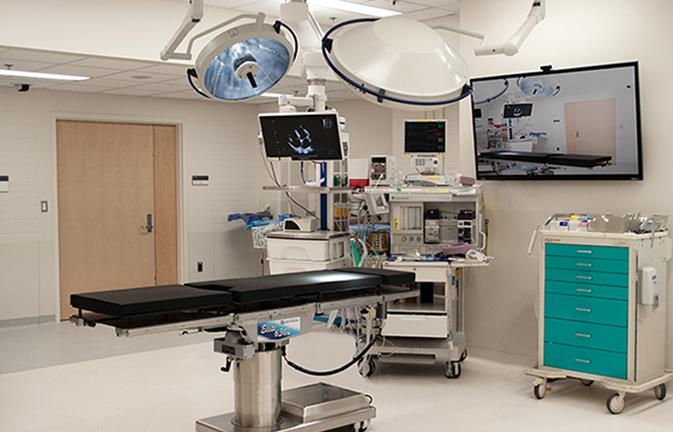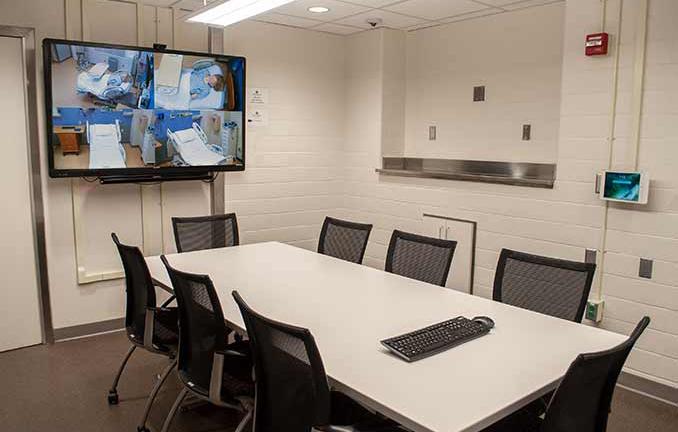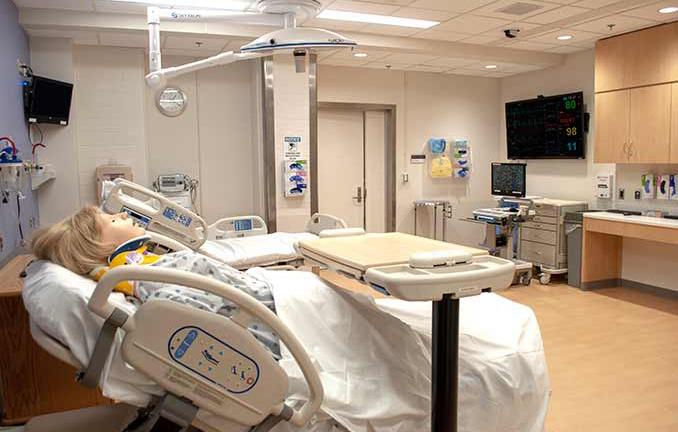Our Work
Johns Hopkins Medicine - Alfred Blalock Building
Solving for IP
Over the past 20 years, Human Circuit has designed and built over 30 clinical skills and simulation centers throughout the United States. A testament to our system designs is that the older systems continue to function to this day. However, there is an “analog sunset.” Analog AV distribution has become problematic as manufacturers no longer supports analog technology.
Human Circuit built the Johns Hopkins Clinical Skills Center in 2008. With an increasing demand, aging baseband equipment and a decreasing budget, Johns Hopkins had a problem. Johns Hopkins had to solve for IP. And this is how we did it.
IP (Internet protocol) enables connectivity, extensibility and usability over Ethernet. When designing a retro-fit, the trick is deciding what equipment stays and what equipment goes. Johns Hopkins Clinical Skills Center depends on baseband video recorders (SimCaptures) provided by B-Line Medical. B-Line’s system components represent a significant investment and Johns Hopkins did not have the budget to replace the existing B-Line components with IP-based components. Johns Hopkins continued reliance on B-Lines baseband video SimCaptures is what we considered to be a “defining constraint” that dictated our approach to solving for IP.
Human Circuit replaced all existing analog cameras with IP enabled cameras. Existing camera control cables were repurposed for Ethernet. Therefore, no new cables needed to be installed from camera to recorder. Power to the camera, and video from the camera, are now distributed over a single CAT cable. Human Circuit installed decoders at the SimCaptures that convert IP video to baseband video. Video is streamed from each camera over existing CAT cable, multicast through an Ethernet switch, decoded to baseband video and recorded by the SimCaptures.
Our design allowed Johns Hopkins to maintain their existing baseband video recorders while upgrading their cameras and implementing an IP enabled AV distribution system. The facility now boasts 30+ rooms. The center is six times the size of the original facility with seven full size rooms to mimic Labor Delivery Recovery (LDR), Trauma, Operating Rooms (OR), Acute Care, and Intensive Care Units (ICU). The infrastructure has been redesigned for progressive simulation which allows a simulation scenario to start in the LDR and be moved through the hallways to the OR. The expansion has opened the original facility for additional uses and kept Johns Hopkins University in the forefront of medical education.









